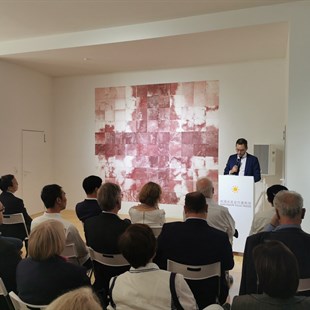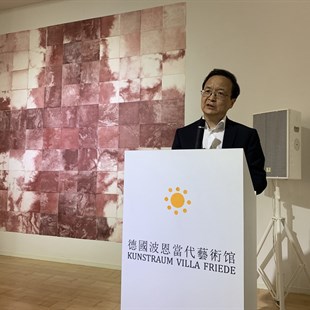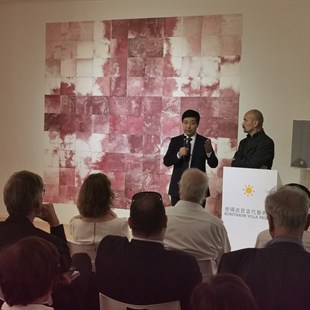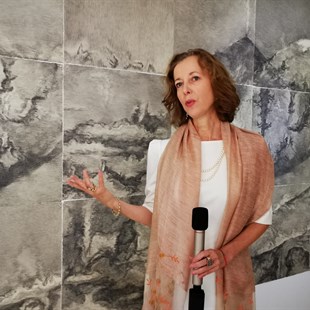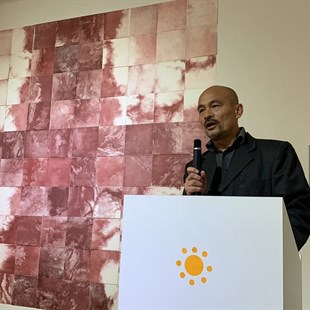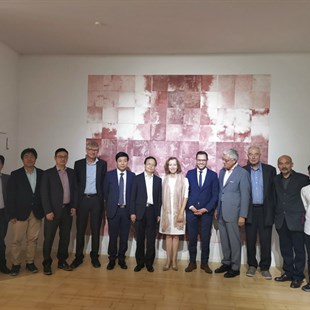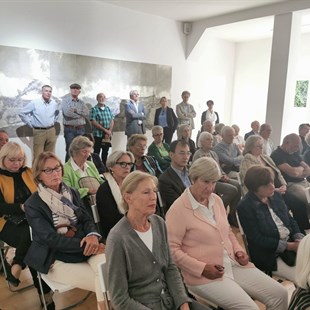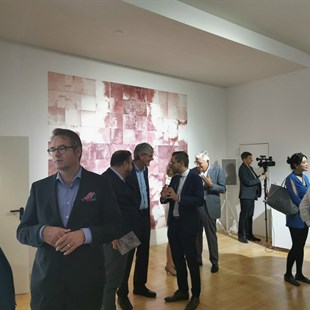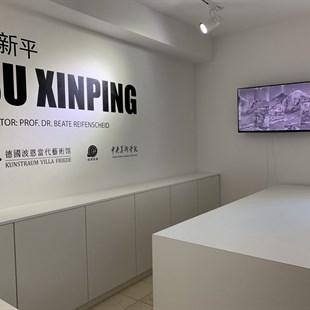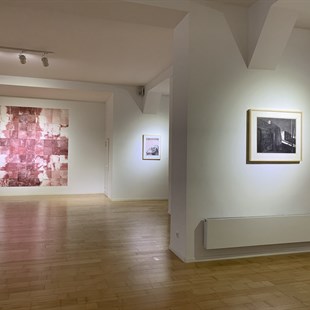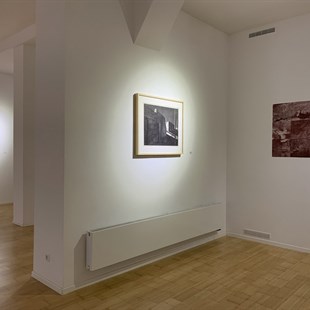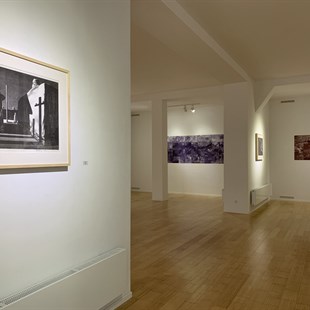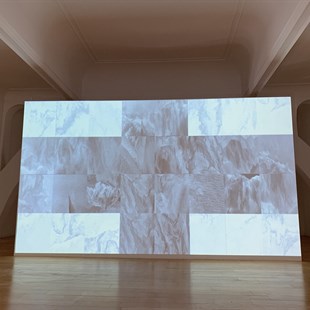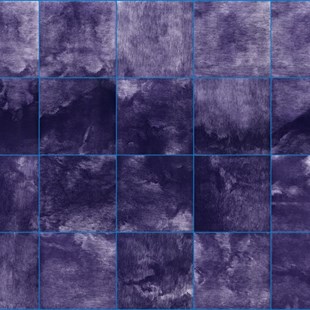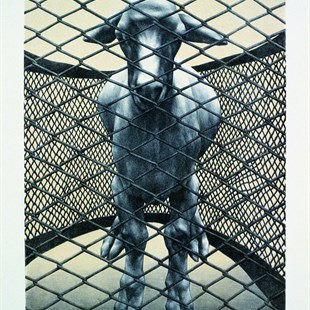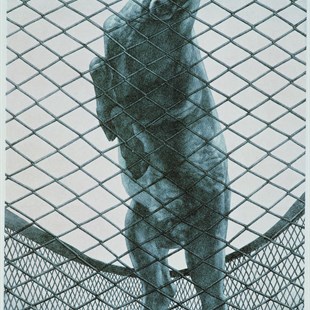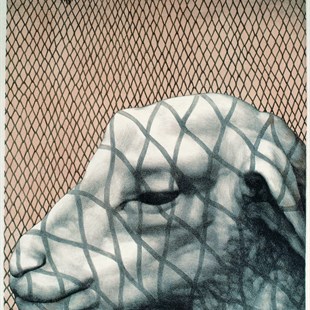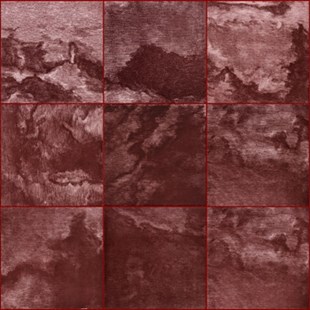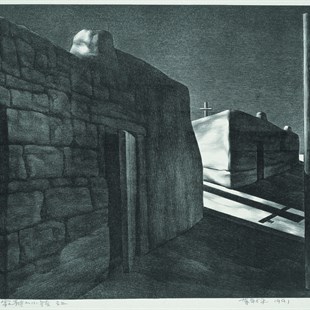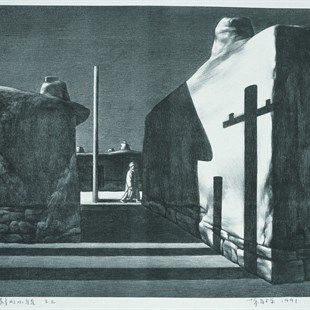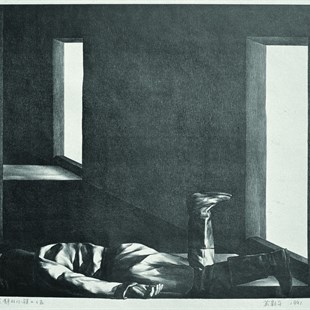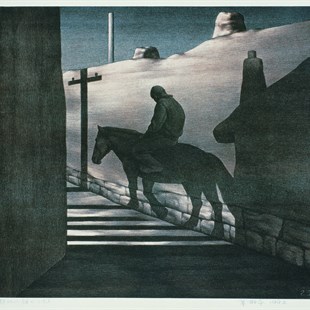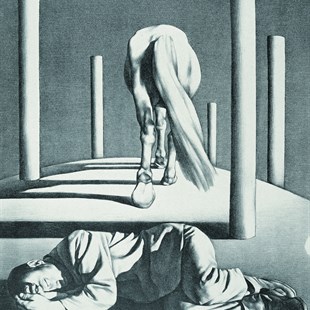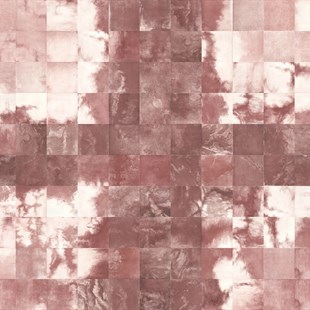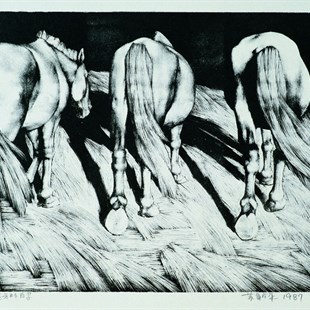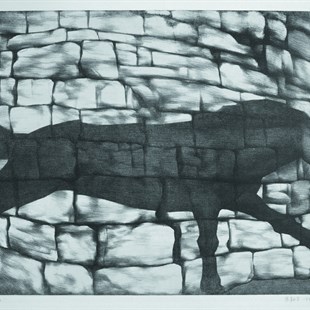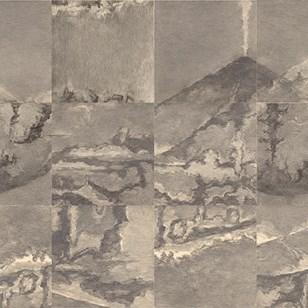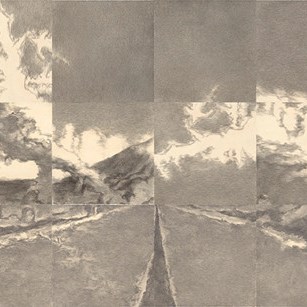
In Germany at 5pm on September 21, 2019, the exhibition which was co-organized by the Central Academy of Fine Arts, Beijing Guochuang Culture and Art Co., Ltd and Bonn Contemporary made its debut at Bonn Contemporary in Germany. The solo exhibition of Su Xinping was curated by Prof. Beate Reifenscheid and it features Su Xinping’s Wasteland series, Silent Townlet series, and his latest experiments in moving image and visual language.
At the opening ceremony, Mr. Christoph Jansen, the Head of the Bonn-Bad Godesberg in Germany, and Mr. Chen Jianyang, the Minister-Counsellor of the Chinese Embassy in Germany, respectively delivered a warm speech; one of the organizers of this exhibition, Mr. Wang Dong, President of Beijing Guochuang Culture and Art Co., Ltd. emphasized the importance of the Sino-German cultural exchange as this was the first time that Su Xinping’s solo exhibition has been presented in Germany. Tang Yu, Assistant Curator and Ren Rong, an artist and the founder of Bonn Contemporary, jointly elaborated on the curatorial concept and space design; Prof. Beate Reifenscheid, Curator of the Museum Ludwig in Koblenz, Germany, talked about the relations between the creation by artist Su Xinping and European Renaissance art, connections among traditional Chinese painting, current reality and individual’s inner state. Walter Smerling, Chairman of the Bonn Culture and Art Foundation, Germany, Marcell Perse, Curator of the Juelich Museum, Germany, and Prof. Deter Ronte, former curator of the Bonn Museum of Art, Germany, He Wenbo, Cultural Consul of the Chinese Consulate General in Düsseldorf, Dr. Wolfgang Runge, former Consul General of the German Consulate General in Shanghai, China, Professor Deng Mengyong and Professor Xi Zhiguo, visiting scholars from China University of Political Science and Law in Germany, and Yang Bin, Secretary General of the Inner Mongolia Alumni Association of the Central Academy of Fine Arts, and Liao Le, the Editor of the National Arts based in Shanghai, China, have specifically visited the exhibition. Artists, curators, collectors, Chinese students, art lovers and journalists from Switzerland, France, Germany and China attended the opening ceremony.
Regarding the creative process of artist Su Xinping, Professor Beate Reifenscheid, the curator for this exhibition and Curator of Museum Ludwig in Koblenz, Germany, elaborated from the perspective of art history in European Renaissance: in the early days of the Renaissance, European artists began to use sketches as a medium for artistic expression. Sketching is no longer just a basic work for painting or mural painting in the later period. Artists in Italy, the Netherlands and Germany have turned sketching into a new language for exploring nature and humanity. They found how important and direct self-expression can be conveyed through sketching, how delicate the lines can be, and thus develop their unique personal styles. For those artists, sketching is a source for exploring the world, discovering the world, and directly reflecting their own thoughts and feelings. “In the Renaissance, the two main criteria for sketching were the free composition of phenomena and the idea of sketches as ‘a way of thinking’.” This idea was followed by important artists including Alfrecht Dürer (Germany), as well as Raphael, Leonardo da Vinci and Michelangelo in the early and prosperous period of the Italian Renaissance. After exploring the external phenomena of the world through paintings, discovering perspectives, wills and the cognition, the ensuing idea is that the sketch can directly reveal the artist’s creative thinking.
For his latest sketches in this exhibition, Su Xinping returned to what was considered to be a very traditional landscape painting creation. He combined mosaics of square pieces of paper to reveal a vast natural landscape and mountains. Because the scenery and the mountains form the image as if they emerge in nothingness, they flow along the line and then they disappear, which makes people feel like they were in a traditional landscape painting. The landscape is both realistic and imaginary. Its existence is an illusion, not a real thing, it was born from a number of tension-filled visual thinking components, but also a book with abundant content about our own world. Su Xinping’s magnificent landscape work is reminiscent of the paintings in a Baroque style full of imagination and attraction, but Su Xinping divides the landscape into the smallest part of a composition. Compared with his works in the early 1990s, he also painted thin lines one after another, rising from time to time, but most of them are relatively flat, avoiding overlapping shadow lines. In his paintings, Su Xinping draws a completely abstract existence in a closed system composed of shadows and lines. None of these paintings are about a continuous landscape, but the combination of them gives rise to continuity. While appreciating his work from a distance, you might finally interpret and understand it as a whole. When viewing at close range, his work looks like a distortion. Each painting is a part of his whole work, so does every line. Thousands of lines are connected to form a visual order. (Excerpt from: Professor Beate Reifenscheid, “Su Xinping—Beautification and Separation of Landscapes”)
The exhibition will remain on view till October 27, 2019.
About the artist
Born in Jining, Inner Mongolia in 1960, Su Xinping entered military service in 1977. He graduated from the Painting Department of Tianjin Academy of Fine Arts in 1983. After graduation, he taught at the Fine Arts Department of Inner Mongolia Normal University. In 1989, he graduated from the Printmaking Department of the Central Academy of Fine Arts with a master’s degree, and stayed on as a teacher. He is currently the Vice President and Professor of the Central Academy of Fine Arts. He is also the Director of the Printmaking Art Committee, Chinese Artists Association and the Vice Chairman of the Beijing Artists Association. He has won the Bronze Award of the 7th National Art Exhibition, the Nomination Prize of the UNESCO Art Promotion Award, and the Lu Xun Printmaking Award. In 2011, he was awarded the title of the 7th Beijing Teaching Master. In 2014, he won the “8th AAC ‘Art.China’ Artists—Oil Painting Awards” and in 2015 he was awarded the title of “Four Advanced Groups of Talents”. His works have been among the collections in the British Museum, the Ashmolean Museum of Oxford University, the Ludwig Museum of Art (Germany), the Portland Museum of Art, the San Francisco Museum, the Fukuoka Art Museum of Japan, the National Museum of Australia, the National Art Museum of China, Shanghai Art Museum and Art Museum of Central Academy of Fine Arts.
Courtesy of the organizer, translated and edited by Sue/CAFA ART INFO
About the exhibition

Organizers: China Central Academy of Fine Arts, Beijing Guochuang Culture and Art Co., Ltd, Bonn Contemporary
Producer: Wang Dong
Curator: Prof. Dr. Beate Reifenscheid
Assistant Curators: Tang Yu, Yang Bin, Zhang Jun
Duration: 21th Sep. 2019 –27th Oct. 2019
Exhibition Venue: Bonn Contemporary


